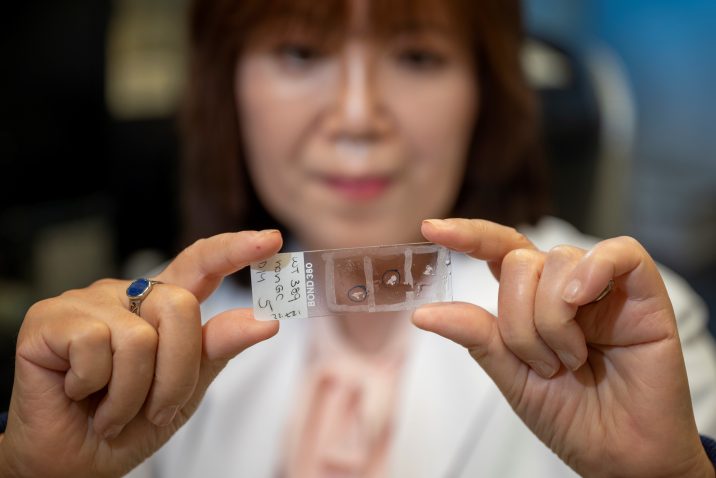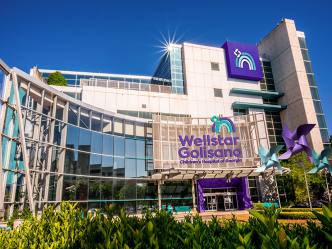A protein that helps keep our cell powerhouses working at a premium appears to also help make energy rapidly available when it’s time to make new blood vessels.
It’s called glycolysis, which quickly converts the glucose, or sugar, in our blood to energy. More typically cell powerhouses, called mitochondria, use products from the food we eat, including glucose, as well as oxygen to more slowly but steadily produce cell fuel.
The protein Drp1 is best known to enable an orderly splitting, or fission, of those fuel-producing powerhouses so that one becomes two and/or mitophagy, which is trimming off dysfunctional parts of existing mitochondria and helping eliminate powerhouses that are beyond repair.
Now Dr. Masuko Ushio-Fukai, vascular biologist in the Vascular Biology Center at the Medical College of Georgia, has early evidence that when oxygen levels are low in common problems like heart disease and peripheral artery disease in the legs, Drp1 gets modified and a new job.
It again promotes splitting, or fission, of the powerhouses but in this case, the magic is in generating a powerful signal, called ROS, that makes glycolysis happen.
“In angiogenic conditions, the role of mitochondria is not to directly generate ATP, but to generate signaling ROS,” Ushio-Fukai says.
She is principal investigator on a new $2 million grant (1R01HL160014-01) from the National Heart, Lung and Blood Institute further detailing this complex chain of events that can be triggered by our tissue’s cries for more oxygen.
Her ultimate goal is identifying new treatment targets to help trigger new blood vessel growth when needed, like in the legs where poor blood and oxygen levels can make just walking painful or impossible, and to block new growth when it’s being usurped by cancer in a process called the Warburg effect. She suspects Drp1 is a sound target.
Ready energy like from glycolysis is needed for the cell proliferation, migration and movement of angiogenesis, and the endothelial cells that line existing blood vessels take the lead in making new ones, says Ushio-Fukai.
Hypoxia, like the heart muscle crying out for more oxygen, is the natural cue for angiogenesis. Vascular endothelial growth factor, which does just what its name implies, outside the endothelial cell is naturally stimulated by hypoxia, then in turn activates NADPH oxidase, a family of enzymes that generate reactive oxygen species, or ROS — in this case the kind that enables cell signaling.
Corresponding authors Ushio-Fukai and Dr. Tohru Fukai, vascular biologist and cardiologist at MCG, reported for the first time recently in Nature Cell Biology that, also in turn, ROS quickly modifies CTR1, a receptor on the cell surface that typically enables the essential mineral copper to get inside, where its jobs include aiding angiogenesis. But CTR1’s modification prompts it to bind with the receptor for VEGF, VEGFR2, also on the cell surface, and the united pair dive inside. This move enables the sustained VEGFR2 signaling essential to making new blood vessels.
But that isn’t the end of the multistep story Ushio-Fukai is helping tell. She has evidence that Drp1 also gets modified by ROS, which prompts it to move from a passive state in the fluid portion of the cell, or cytosol, to the mitochondria where it still promotes fission, which also produces the powerful ROS hydrogen peroxide. She says bustling mitochondria are big users of oxygen and consequently, like NADPH oxidase, big producers of ROS in the endothelial cells. Whether or not it’s the same ROS modifying CTR1 and Drp1 is one of the pieces the grant is helping her put together, but she has preliminary evidence it is.
Either way, they’ve shown ROS generated by the mitochondria in turn activates AMPK, an enzyme key to regulating energy levels in cells and known to use glucose to quickly generate sufficient energy to support important biological work like making new blood vessels.
“We want to find out more about how Drp1 is doing what it’s doing,” Ushio-Fukai says of the opportunities the new funding provides.
They’ve used the gene editing capabilities of CRISPR-Cas9 to generate a mouse where Drp1 does not get modified and VEGF-induced angiogenesis and glycolysis are both blocked, she says.
Ushio-Fukai and her colleagues have shown that when ROS from the mitochondria is blocked, angiogenesis produced by endothelial cells also is impaired. And it appears to be a two-way street because VEGF’s ability to enable angiogenesis also is impaired, and that mitochondrial ROS can activate NADPH oxidase ROS and vice versa — something they call ROS induced ROS signaling. Together the result is sustained signaling. If you block mitochondria ROS, the chain reaction is blocked, Ushio-Fukai says.
“NADPH oxidase in endothelial cells is very important to ROS signaling,” Ushio-Fukai says. “If it doesn’t happen, the chain reaction and ultimately angiogenesis don’t happen.”
She now wants to know what happens in vascular disease states, where ROS rates are abnormally high. “If ROS is too high, does this system still work or not, is basically the next question,” she says.
ROS is a byproduct of oxygen use, which at normal levels is important to basic body functions like signaling those endothelial cells to enable angiogenesis. At high levels, ROS actually contributes to many conditions like heart disease and diabetes and is thought to hinder angiogenesis.
In addition to disease states, angiogenesis also is important to repair of a physical injury like from an automobile wreck.
Mitochondria, which are found in the majority of cell types, also help decide whether it’s time for a cell to die, store calcium until it’s needed and generate heat.
 Augusta University
Augusta University




